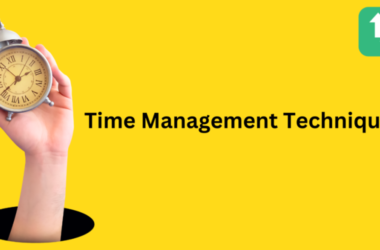Table of Contents Show
Maintaining productivity is crucial for entrepreneurs and managers. However, unplanned meetings often creep into our schedules, causing significant disruptions.
These spontaneous gatherings, while sometimes necessary, can do more harm than good by interrupting workflows, reducing productivity, and increasing stress among employees.
In this blog, we will discuss how unplanned meetings are downplaying your productivity, and doing more harm.
The Nature of Unplanned Meetings
Unplanned meetings are those that occur without prior notice or scheduling. They often arise from sudden issues, last-minute changes, or urgent decisions needing immediate attention.
For example, a project manager might call an impromptu meeting to address an unexpected client request or a sudden technical problem. While these meetings may seem essential, their ad hoc nature can be highly disruptive.
Disruptions to Workflow
One of the most detrimental effects of unplanned meetings is their disruption to an individual’s workflow. When employees are deeply engaged in focused work, an unexpected meeting can cause a significant cognitive shift.
Switching tasks abruptly leads to a loss of momentum and requires additional time to regain focus post-meeting. This phenomenon, often referred to as the “switching cost,” results in decreased efficiency and productivity.
Imagine a software developer in the middle of debugging a complex code; an unplanned meeting can derail their thought process, making it difficult to resume where they left off.
Impact on Team Productivity
Unplanned meetings don’t just affect individuals; they also disrupt team productivity. Pulling multiple team members into an unplanned meeting means halting various ongoing tasks simultaneously.
This collective pause can slow down project timelines and lead to missed deadlines. For instance, in a marketing team, if the content writer, graphic designer, and social media manager are all pulled into a sudden meeting, the entire campaign workflow is interrupted.
Data from various studies indicate that such disruptions can lead to a significant decline in overall team output.
Psychological Effects on Employees
The constant interruption caused by unplanned meetings can also have severe psychological effects on employees.
The unpredictability of these meetings contributes to heightened stress and anxiety. Employees may feel they cannot plan their day effectively, leading to frustration and decreased job satisfaction.
Over time, the accumulation of such stress can result in burnout, adversely affecting employee morale and retention rates. A study by the American Psychological Association found that unpredictable work patterns are a major source of workplace stress.
Inefficiency and Wasted Time
Unplanned meetings are often inefficient and lead to wasted time. Unlike well-planned meetings with set agendas, unplanned meetings can meander without clear objectives. This lack of structure can result in prolonged discussions with minimal actionable outcomes.
For example, an unplanned meeting to discuss a minor issue might devolve into an hour-long debate, diverting attention from more critical tasks. Comparatively, planned meetings with defined purposes are more likely to be productive and concise.
Communication Overload
The proliferation of communication tools like email and instant messaging has inadvertently increased the frequency of unplanned meetings. While these tools are designed to facilitate communication, they can also create a paradox of overload.
Constant notifications and the ease of setting up quick meetings can lead to a barrage of interruptions. Striking a balance between necessary communication and avoiding interruptions is crucial.
Organizations need to establish clear guidelines on the use of these tools to prevent them from becoming sources of distraction.
Strategies to Minimize Unplanned Meetings
Minimizing unplanned meetings requires a multi-faceted approach. Implementing strict meeting policies is essential.
For instance, companies can designate specific times for meetings, ensuring that most of the workday remains undisturbed.
Encouraging better planning and scheduling practices can also help. Teams should be trained to identify and resolve potential issues proactively, reducing the need for spontaneous meetings.
Additionally, tools like shared calendars and project management software can aid in better coordination and planning.
Effective Alternatives to Unplanned Meetings
There are several effective alternatives to unplanned meetings. Asynchronous communication, such as detailed emails or project management updates, allows team members to address issues without immediate interruptions.
Setting clear agendas and objectives for necessary meetings ensures they are concise and productive.
Training employees in effective communication and time management further minimizes the need for impromptu gatherings.
For example, a detailed project update via email can often replace the need for a last-minute meeting, saving time and reducing disruptions.
Conclusion
Unplanned meetings can have a detrimental impact on both individual and team productivity. By disrupting workflows, increasing stress, and leading to inefficiencies, these meetings do more harm than good.
Organizations must adopt better planning practices, implement strict meeting policies, and explore alternatives like asynchronous communication to foster a more productive work environment.
By doing so, they can reduce the negative impacts of unplanned meetings and enhance overall workplace efficiency.
Unplanned meetings might seem unavoidable at times, but with conscious effort and strategic planning, their occurrence and impact can be significantly minimized.
Let’s strive for a work environment where productivity thrives, and unnecessary interruptions are kept at bay.
More Readings:










